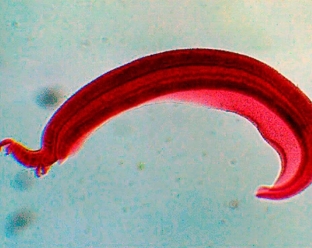This disease is well known in tropical countries, but the causative agent of the disease called bather's itch is also found in temperate climates, infectious disease specialists in Italy, France, Russia, and Ukraine are well aware of it. We are talking about schistosomatid dermatitis, which is a parasitic disease. The cause of its development is the helminths of cercaria, which parasitize in the blood of waterfowl and some aquatic rodents. These cercariae are able to penetrate the skin of a person bathing in a pond and bring him a lot of trouble.
Causes of bather's itch in humans
Today, experts identify about 20 species of helminths that can exist in the body of ducks, swans, gulls, small waterfowl rodents and be released into the water with feces. These parasites are able to attach to human skin in water, penetrate into its depth and, releasing a special secret, migrate in the thickness of the skin.
It was previously assumed that human infection with schistosomatid dermatitis is possible only when bathing in stagnant water bodies or, for example, when working in ponds or rivers & nbsp; with slow water flow. However, recent data from scientists indicate cases of bather's itch even after swimming in the sea.
In the process of parasite migration through the thickness of the skin, the human body activates its defenses, leukocyte infiltrates form in the skin, an acute immunological reaction develops, leading to the death of helminths. The secret secreted by helminths, the products of their metabolism, the mechanical effect of these parasites when moving in the thickness of the skin, the death and decay of helminths – all this causes a toxic-allergic reaction in a person.
Bather's itch: how to recognize the symptoms and treat the disease
Symptoms of human skin lesions with cercariae appear almost immediately after swimming in a helminth-infested pond. Approximately a quarter of an hour after contact with contaminated water, severe skin itching appears, and an hour later the skin becomes covered with rash spots, which disappear on their own after 6-8 hours.

If the infection occurs repeatedly, the symptoms appear brighter, and the disease is more acute. In addition to severe itching, patients note the appearance of erymatous areas on the skin, and after a few days, red papules, blisters and swelling of the skin may appear. Sometimes blisters appear a week or more after exposure to contaminated water.
Bather's itch resolves in about one to two weeks and does not require specific treatment. If necessary, the sensation of itching and swelling phenomena are removed by topical application of anti-allergic ointments, if the itching is very strong – local application of corticosteroid agents is possible.
The prognosis of the disease is favorable, complications after it are not observed.







Add a comment